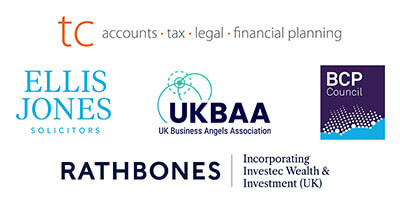A Guest Blog by Jackie Goddard
Walking into a room full of investors can feel intimidating. But here’s the truth: they want you to succeed. They’re looking for someone they can trust, someone they can believe in, and someone who has a story worth investing in.
So how do you make sure your pitch lands? Let’s break it down.
Meet the Founder
If you’re fortunate enough to have time before your formal presentation to meet investors one-to-one, use it wisely. This isn’t the moment to recite a verbatim rehearsed pitch (though it is crucial to know your presentation fully). Instead, have a genuine conversation. Talk human to human. Explain with passion why you’re there, what you’re introducing, and why your product or service matters.
This introduction is about your personality, not just your product. Be open, be curious, ask questions. It’s not all about you—it’s about them as consumers and as investors. Show genuine interest in understanding their perspective. This interaction is your chance to connect on a level that transcends the formal pitch.
Be human first, presenter second
First things first: when you step up to present, smile. Bring energy to the room. Your audience will mirror you, so if you look like you’d rather be anywhere else, that’s exactly how they’ll feel. Investors need to feel comfortable in your presence, and you create that comfort through open gestures, genuine smiles, and inviting language.
Use words they understand. Be human and relatable. If you’re stiff, nervous, or clearly uncomfortable, your audience will be too. But if you’re confident, warm, and engaging, they’ll lean in.
You are not your slides
Don’t read your slides. If you’re standing in front of a screen covered in text, turning your back to your audience to recite bullet points, you’ve already lost them. Your slides are called visuals for a reason. They should support your message, not be your message.
Keep your slides clear, concise, and brief. Better yet, have bullet points appear one at a time. This prevents your audience from being overwhelmed by walls of text and keeps them focused on you. Remember, investors are investing in you as a person, not in a PowerPoint presentation. They need to trust you, like you, and get to know you. That can’t happen if you’re hiding behind your slides.
Authenticity wins every time
Make sure you believe what you’re saying. The words you use must align with your own values. Even if the product or service isn’t something you’d personally use, you need to find genuine conviction in what you’re presenting. Audiences can sense inauthenticity instantly, and if you don’t believe what you’re saying, neither will they.
Use your own words. If there’s anything about your product or service you don’t fully understand, do your research before you walk into that room. Don’t hide behind statistics or jargon you can’t explain. If you do, you’ll either be caught out, or you’ll spend the entire presentation worried about being caught out. Either way, you’ll be nervous, rushed, and uncomfortable—and so will your audience.
Start with why
As Simon Sinek famously says, start with why. Why are you doing this? What makes you passionate about what you’re presenting? Your audience doesn’t need to know the how or the what right away. They want to know why they should invest in you, and then your product or service. They want to know the outcome, and they want to understand your motivation.
And of course, get the numbers right. Be honest. Make sure everything you present is the truth. Know your business inside out and know why you’re doing it.
To script or not to script?
You absolutely need to practice. Your presentation should be mapped out and structured. But alongside the statistics and numbers, make sure you’ve got the story right. Everyone connects with a story. Your slides will prompt you, and all you need to remember are the stories you’re telling.
Practice until you can deliver this presentation in your sleep. Memorise to improvise. When you know your material that well, you’ll be comfortable enough to play, to be engaging, to be entertaining, to be genuinely curious when questions arise.
Ground yourself
When nerves hit, there’s a tendency to dance from foot to foot or move unnecessarily. Fight this urge. Once you’ve practiced thoroughly, focus on being grounded. Plant your feet firmly on the floor, face your audience, and stay still. Ground yourself with your breathing. This physical stillness will help you slow down and deliver with confidence.
Respect the clock
When you’ve been given a time limit, stick to it. Practice your presentation until you know exactly how long it takes. If you’ve been allocated ten minutes, aim for eight. This gives you a buffer—time to slow down, speak in a measured way, and avoid rushing through your most important points.
Too often, founders run out of time and have to rush their closing slides. That’s tragic, because that’s usually where your call-to-action lives, where your mic drop moment happens. Give yourself the space to land your conclusion with impact.
Walking into the “Dragons’ Den” doesn’t have to be terrifying. With preparation, authenticity, and genuine passion, you can turn that intimidating room into an opportunity to share something you truly believe in. The investors are listening. Make sure they hear you.
This blog was kindly written for DBA by Jackie Goddard. For more about Jackie, visit her website: Powertospeak.co.uk




